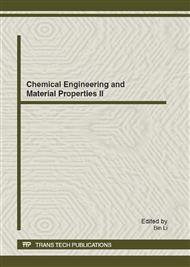p.1012
p.1017
p.1021
p.1026
p.1032
p.1037
p.1041
p.1046
p.1051
Application of Low-Position Vacuum Deaerator in Steam Injection Boiler Supply Water Deaeration in Oil Fields
Abstract:
A high level of oxygen in boiler supply water would lead to oxidation corrosion of the boiler tubes. Reduction of the boiler tube thickness will affect its service life even result in such serious accidents as tube explosion. In S oil-field, a combining measure of physical and chemical methods were adopted to improve deaerator technology. A relatively complete ground deaeration process is formed. The deaeration system consists of water ring vaccum pump, deaeration tank, booster pump, circulating tank, etc. First softened water processed by softener would flow through 80 mesh stainless steel screen filter. Then in high vacuum deaeration tank, the water will be ejected in a spray due to the eddying flow of the nozzles and size of the droplet can reach 30 micrometer. Oxygen partial pressure in the tank is in a minimal level so that dissolved oxygen in the water-drops can be released. The steam and released oxygen will be sent to circulating tank for recycling. Deoxidation rate of the process can be above 95% and residual dissolved oxygen can be removed by chemicals. So the boiler supply water can meet technical requirements. The deaeration system has a good application in boiler supply water deaeration in S oil-field. Practical application shows the deaeration system has characteristics of stable performance, mainly maintenance-free, and good adaptability to some poor-quality water. So the deaeration system has a good promotion value.
Info:
Periodical:
Pages:
1032-1036
Citation:
Online since:
July 2012
Authors:
Keywords:
Price:
Сopyright:
© 2012 Trans Tech Publications Ltd. All Rights Reserved
Share:
Citation:


